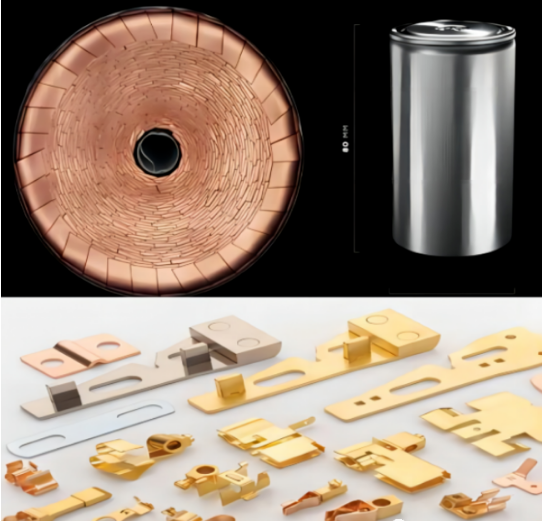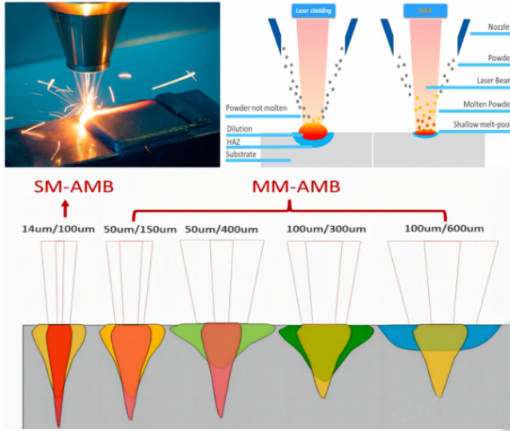The size of the laser core diameter will affect the transmission loss and energy density distribution of light. Reasonable selection of the core diameter is very important. Excessive core diameter will lead to mode distortion and scattering in laser transmission, affecting beam quality and focusing accuracy. Too small a core diameter will cause The symmetry of optical power density of single-mode fiber becomes worse, which is not conducive to the transmission of high-power laser.
1. Advantages and applications of small core diameter lasers (<100um)
Highly reflective materials: aluminum, copper, stainless steel, nickel, molybdenum, etc.;
(1)Highly reflective materials need to choose a small core diameter laser. The high power density laser beam is used to quickly heat the material to a liquefied or vaporized state, which improves the laser absorption rate of the material and achieves efficient and fast processing. Choosing a laser with a large core diameter can easily lead to high reflection. , leading to virtual welding and even burning of the laser;
Crack-sensitive materials: nickel, nickel-plated copper, aluminum, stainless steel, titanium alloy, etc.
This material generally requires strict control of the heat-affected zone and a small melt pool, so it is more appropriate to choose a small core diameter laser;
(3)Deep penetration welding requires high-speed laser processing, and it is necessary to choose a laser with high energy density to ensure that the line energy is sufficient to melt the material at high speed, especially for lap welding, penetration welding, etc., which require a higher penetration depth. It is better to choose a small core diameter laser suitable.
2. Advantages and applications of large core diameter lasers (>100um)
Large core diameter and large spot, large heat coverage area, wide action area, and only micro-melting of the material surface are achieved, which is very suitable for applications in laser cladding, laser remelting, laser annealing, laser hardening, etc. In these fields, a large light spot means higher production efficiency and lower defects (thermal conductive welding has almost no defects).
In terms of welding, the large spot is mainly used for composite welding, which is used for compounding with small core diameter laser: the large spot makes the surface of the material melt slightly, transforming from solid to liquid, which greatly improves the absorption rate of the material to the laser, and then uses a small core In this process, due to the preheating of the large spot, post-processing, and the large temperature gradient given to the molten pool, the material is not prone to crack defects caused by rapid heating and rapid cooling. It can make the appearance of the weld smoother and achieve lower spatter than the single laser solution.
Post time: Sep-04-2023









